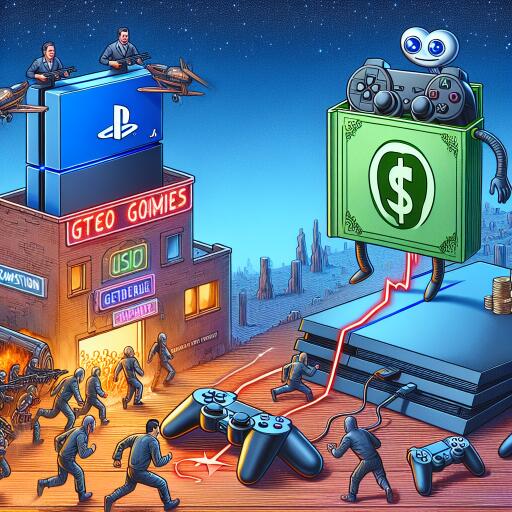Microsoft Sees Gaming Revenue Soar with Activision Blizzard Merger Despite Xbox Sales Downturn
In a dramatic twist of fate for the gaming industry, Microsoft’s recent financial statements reveal a significant increase in gaming revenue, largely buoyed by its merger with gaming giant Activision Blizzard. This move has evidently paid off, with an impressive rise in income from gaming activities. Yet, this success story is somewhat marred by the stark decline in Xbox console sales, casting a shadow over Microsoft’s hardware market performance.
The figures are compelling; Microsoft’s gaming sector has seen a revenue jump of $1.8 billion, marking a 51 percent increase compared to the previous year. A notable contributor to this uptick is the revenue from Xbox content and services, which alone surged by 62 percent. This leap is attributed to the strategic acquisition of Activision Blizzard, a move that has considerably enhanced Microsoft’s gaming portfolio and revenue.
However, it’s not all rosy in Microsoft’s gaming world. The company has faced challenges in the hardware domain, with a significant 31 percent dip in Xbox console sales. This decline has persisted despite efforts to invigorate the market, including the launch of the much-anticipated exclusive title, Starfield. This pattern echoes the previous year’s trend, where a 30 percent fall in hardware revenue was reported, suggesting a concerning downward trajectory for Xbox sales.
Interestingly, Microsoft’s latest financial disclosures make no mention of Game Pass subscriber totals. This omission has raised questions, given the previous emphasis on Game Pass as a cornerstone of Microsoft’s gaming strategy.
The broader context of this situation was hinted at earlier in the year by Microsoft Gaming head, Phil Spencer, who pointed out the gaming industry’s overall stagnation as a worrying trend. This stagnant growth has been a driving factor behind Microsoft’s decision to lay off a significant portion of its workforce and to adopt a more platform-agnostic approach, introducing its games on rival consoles such as the Sony PlayStation and Nintendo Switch.
In a notable shift, Microsoft CEO Satya Nadella highlighted the company’s strategy to diversify its gaming offerings across different platforms. “Expanding our games to new platforms brings four of our fan favorites to the Nintendo Switch and Sony PlayStation for the first time,” Nadella remarked. This move seems to pay dividends, with Microsoft games ranking prominently in the PlayStation Store’s top 25, outshining other publishers.
The financial implications of the Activision Blizzard merger extend beyond revenue, impacting Microsoft’s operating income positively with a 16 percent increase. However, this came at a cost, with operating expenses ballooning by $1.3 billion or 41 percent, primarily due to the integration and expansion of Activision Blizzard into Microsoft’s portfolio.
The completion of the Activision Blizzard acquisition, a deal valued at $68.7 billion and marking the largest in the history of the video games industry, was finalized in October of the previous year. The ramifications of this historic acquisition are now evident in Microsoft’s financial performance, showcasing a strategic, albeit mixed, impact on the company’s gaming division.
This complex scenario paints a picture of a gaming giant at a crossroads. On one hand, Microsoft’s acquisition of Activision Blizzard has bolstered its gaming revenue, proving the worth of its investment. On the other, the company grapples with declining hardware sales, signaling challenges that lie ahead in the competitive console market. As Microsoft navigates these challenges, its strategy to diversify and innovate within the gaming industry will be critical to its continued success and growth.









